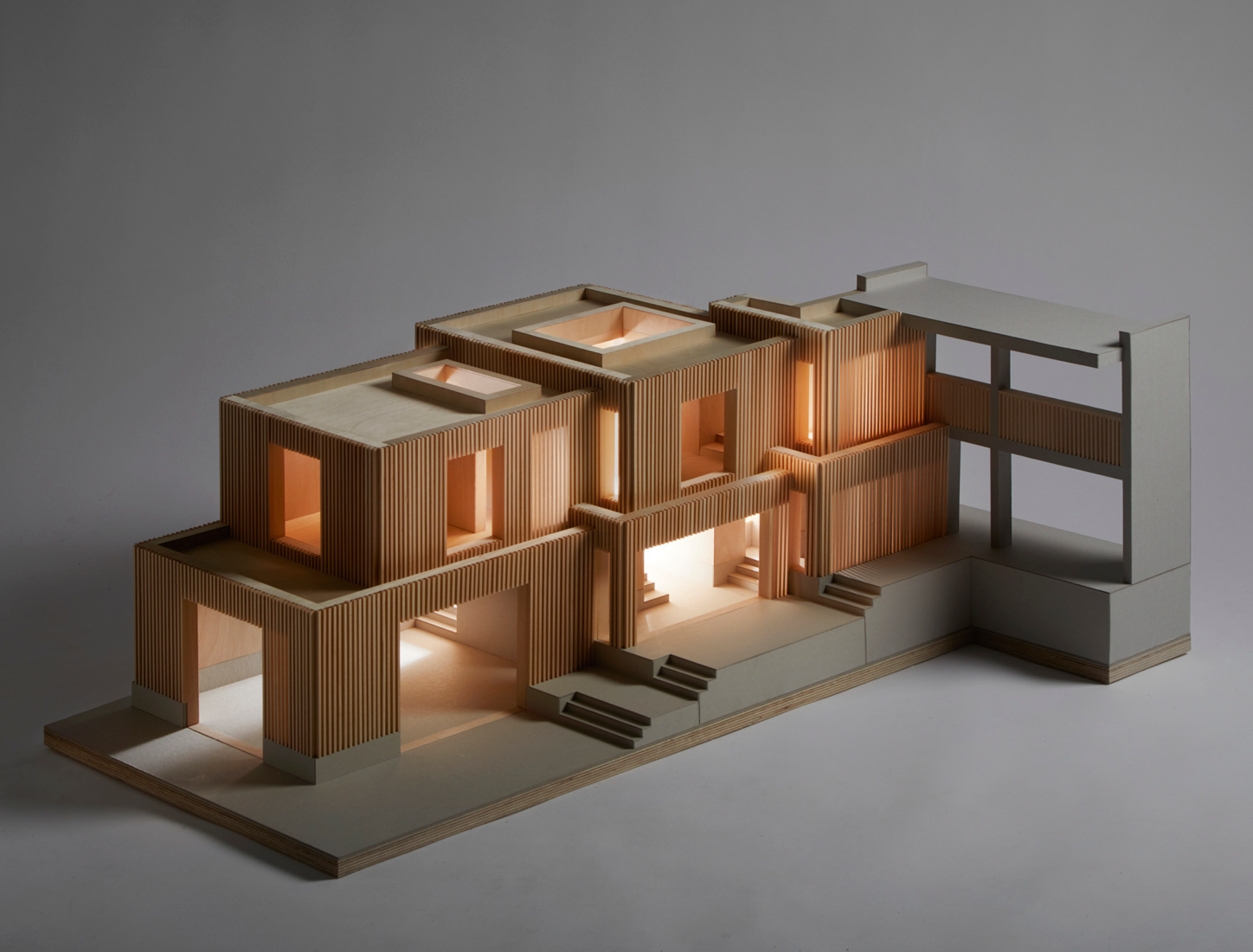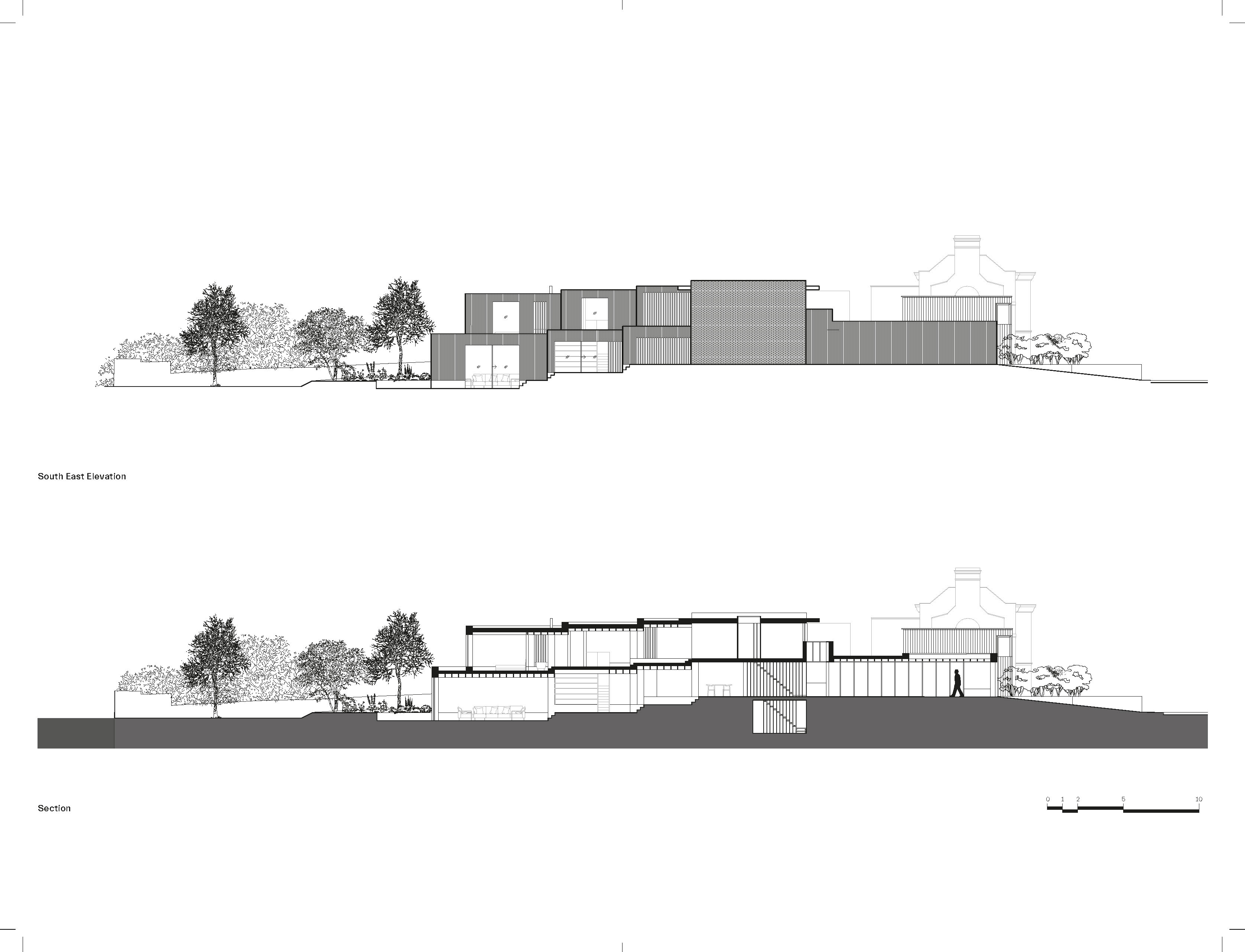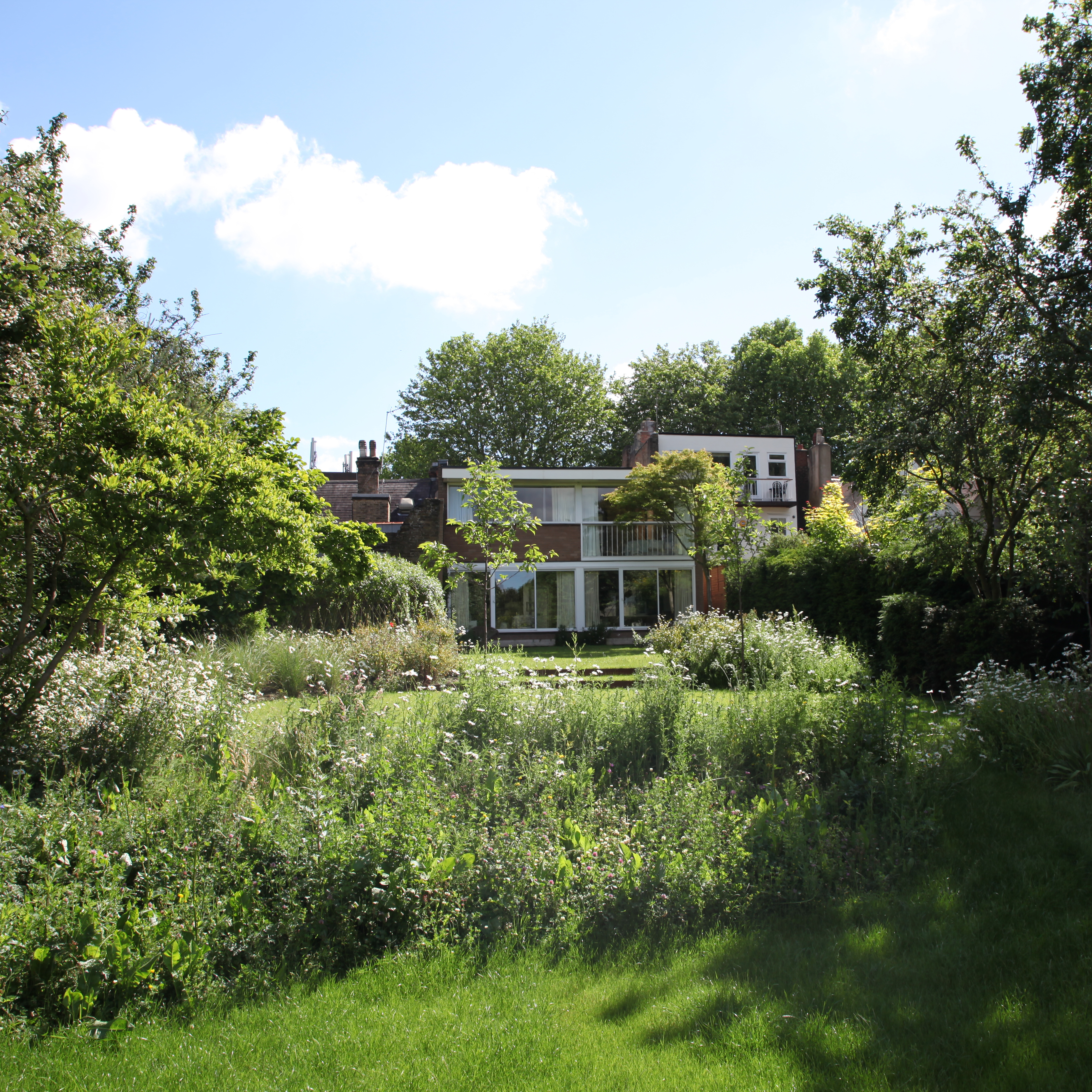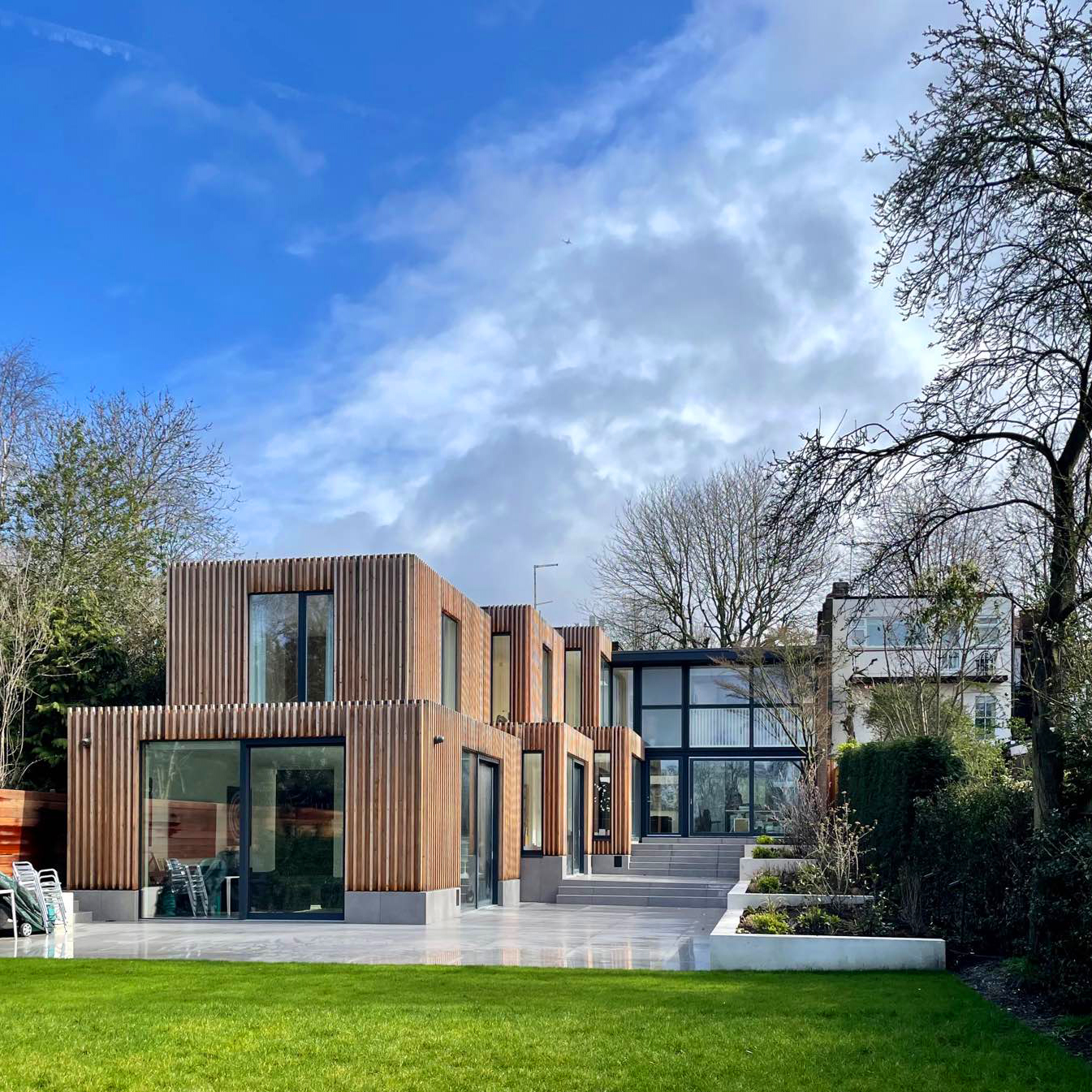Bungalow Bliss
Client: Private
Type: Renovation and Addition
Gross Internal Area: 284sqm / 3056 sqft
Status: in Construction
Location: Co. Kerry
Date: 2024-
A Bungalow Bliss-era dwelling, nestled in a woodland by the sea on the Dingle Peninsula, will be transformed into a contemporary family home after lying dormant for over twenty years.
To reduce demolition and construction waste, the original wet-dash rendered walls will be retained and repaired, preserving the understated, utilitarian character of the existing structure. A series of vaulted spaces will then be carefully grafted-on, with the junction between old and new celebrated through a change in surface texture. This horizontal datum—the moment where old and new are fused—will act as a chalk line, defining where openings will sit, rooflines will terminate, and gutters will extend, visually stitching the composition together while highlighting the dialogue between the original and the proposed.
Kissing gables will define an entrance arcade, enhancing the sense of arrival from the north-east, while to the rear a south-facing courtyard will maximise solar gain, encourage passive ventilation, and improve outdoor amenity. The inward-facing typology defined by asymmetric gables will reflect the spatial composition and form typical of vernacular farm clusters, shaped by the need for collective shelter from prevailing Atlantic winds and a strong sense of enclosure.
Inside, vaulted communal spaces will reinterpret the traditional direct-entry cottage, balancing openness with intimacy and accommodating the adaptable, fluid patterns of modern family life. The result will be a home that honours the existing while evolving it into a flexible, connected space for its next chapter.
Client: Private
Type: Renovation and Addition
Gross Internal Area: 284sqm / 3056 sqft
Status: in Construction
Location: Co. Kerry
Date: 2024-
A Bungalow Bliss-era dwelling, nestled in a woodland by the sea on the Dingle Peninsula, will be transformed into a contemporary family home after lying dormant for over twenty years.
To reduce demolition and construction waste, the original wet-dash rendered walls will be retained and repaired, preserving the understated, utilitarian character of the existing structure. A series of vaulted spaces will then be carefully grafted-on, with the junction between old and new celebrated through a change in surface texture. This horizontal datum—the moment where old and new are fused—will act as a chalk line, defining where openings will sit, rooflines will terminate, and gutters will extend, visually stitching the composition together while highlighting the dialogue between the original and the proposed.
Kissing gables will define an entrance arcade, enhancing the sense of arrival from the north-east, while to the rear a south-facing courtyard will maximise solar gain, encourage passive ventilation, and improve outdoor amenity. The inward-facing typology defined by asymmetric gables will reflect the spatial composition and form typical of vernacular farm clusters, shaped by the need for collective shelter from prevailing Atlantic winds and a strong sense of enclosure.
Inside, vaulted communal spaces will reinterpret the traditional direct-entry cottage, balancing openness with intimacy and accommodating the adaptable, fluid patterns of modern family life. The result will be a home that honours the existing while evolving it into a flexible, connected space for its next chapter.
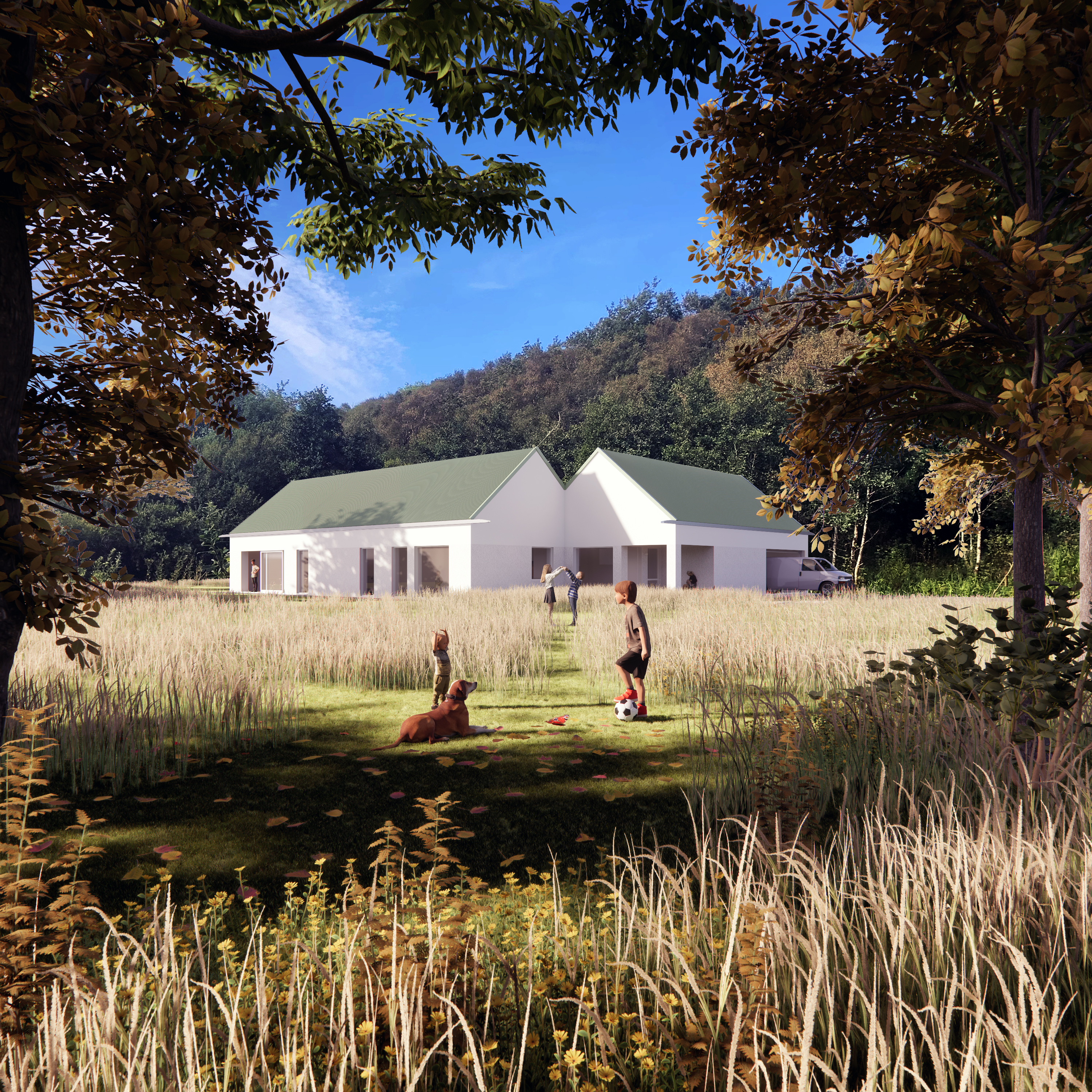
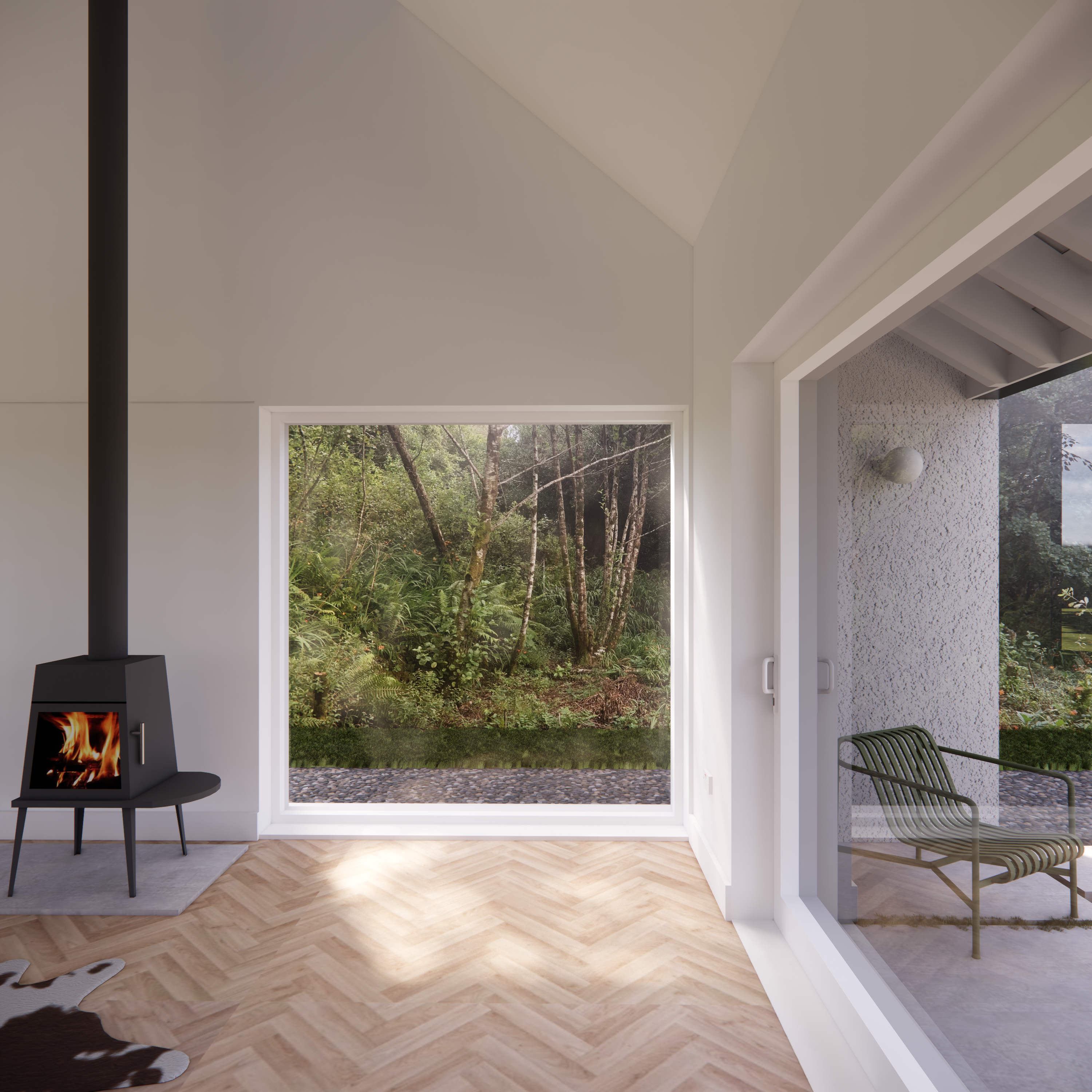
An Leabharlann (The Library)
Client: Private
Type: Renovation and Addition
Gross Internal Area: 28 sqm / 301 sqft
Status: in Construction
Location: Co. Kerry
Date: 2024-
A library and writing retreat is sensitively embedded into the hillside, carefully grafted onto the side of a traditional two-storey stone farmhouse.
The new addition draws formal and material inspiration from the single-barrel-vaulted hay barns once typical of Kerry’s rural landscape. These modest agricultural structures—roofed in corrugated steel and often located adjacent to farmhouses—played an essential role in daily life. Though increasingly rare, their typology remains deeply embedded in the collective rural memory. This project reinterprets that elemental form, reasserting it within a contemporary architectural language and on a site where hay was once traditionally piled into a coca féir.
The library will be clad in stone salvaged from the client’s grandmother’s birthplace, now a ruin, in nearby Doonshean. These weathered stones, rich with personal and cultural resonance, will anchor the new structure in both memory and place.
A transparent threshold, illuminated from above by a circular rooflight, links past and present. Inside, a sequence of naturally lit enfilade spaces provides layered sightlines through the house and library, extending outward to the surrounding fields and the distant Atlantic horizon. The vaulted ceiling enhances the sense of verticality and creates a contemplative atmosphere.
The material palette is intentionally restrained and tactile. Handmade oak shelving and plan chests line the interior, housing the client’s extensive book collection while serving as both functional storage and integrated seating.
A deep window seat, oriented toward sun, field and sea, offers a place of introspection—a quiet observatory for the shifting rhythms of light and landscape.
Project Collaborations:
Main Contractor: Gearóid Misteal + Team
Stone Mason: Aidan McKenna + Team
Client: Private
Type: Renovation and Addition
Gross Internal Area: 28 sqm / 301 sqft
Status: in Construction
Location: Co. Kerry
Date: 2024-
A library and writing retreat is sensitively embedded into the hillside, carefully grafted onto the side of a traditional two-storey stone farmhouse.
The new addition draws formal and material inspiration from the single-barrel-vaulted hay barns once typical of Kerry’s rural landscape. These modest agricultural structures—roofed in corrugated steel and often located adjacent to farmhouses—played an essential role in daily life. Though increasingly rare, their typology remains deeply embedded in the collective rural memory. This project reinterprets that elemental form, reasserting it within a contemporary architectural language and on a site where hay was once traditionally piled into a coca féir.
The library will be clad in stone salvaged from the client’s grandmother’s birthplace, now a ruin, in nearby Doonshean. These weathered stones, rich with personal and cultural resonance, will anchor the new structure in both memory and place.
A transparent threshold, illuminated from above by a circular rooflight, links past and present. Inside, a sequence of naturally lit enfilade spaces provides layered sightlines through the house and library, extending outward to the surrounding fields and the distant Atlantic horizon. The vaulted ceiling enhances the sense of verticality and creates a contemplative atmosphere.
The material palette is intentionally restrained and tactile. Handmade oak shelving and plan chests line the interior, housing the client’s extensive book collection while serving as both functional storage and integrated seating.
A deep window seat, oriented toward sun, field and sea, offers a place of introspection—a quiet observatory for the shifting rhythms of light and landscape.
Project Collaborations:
Main Contractor: Gearóid Misteal + Team
Stone Mason: Aidan McKenna + Team
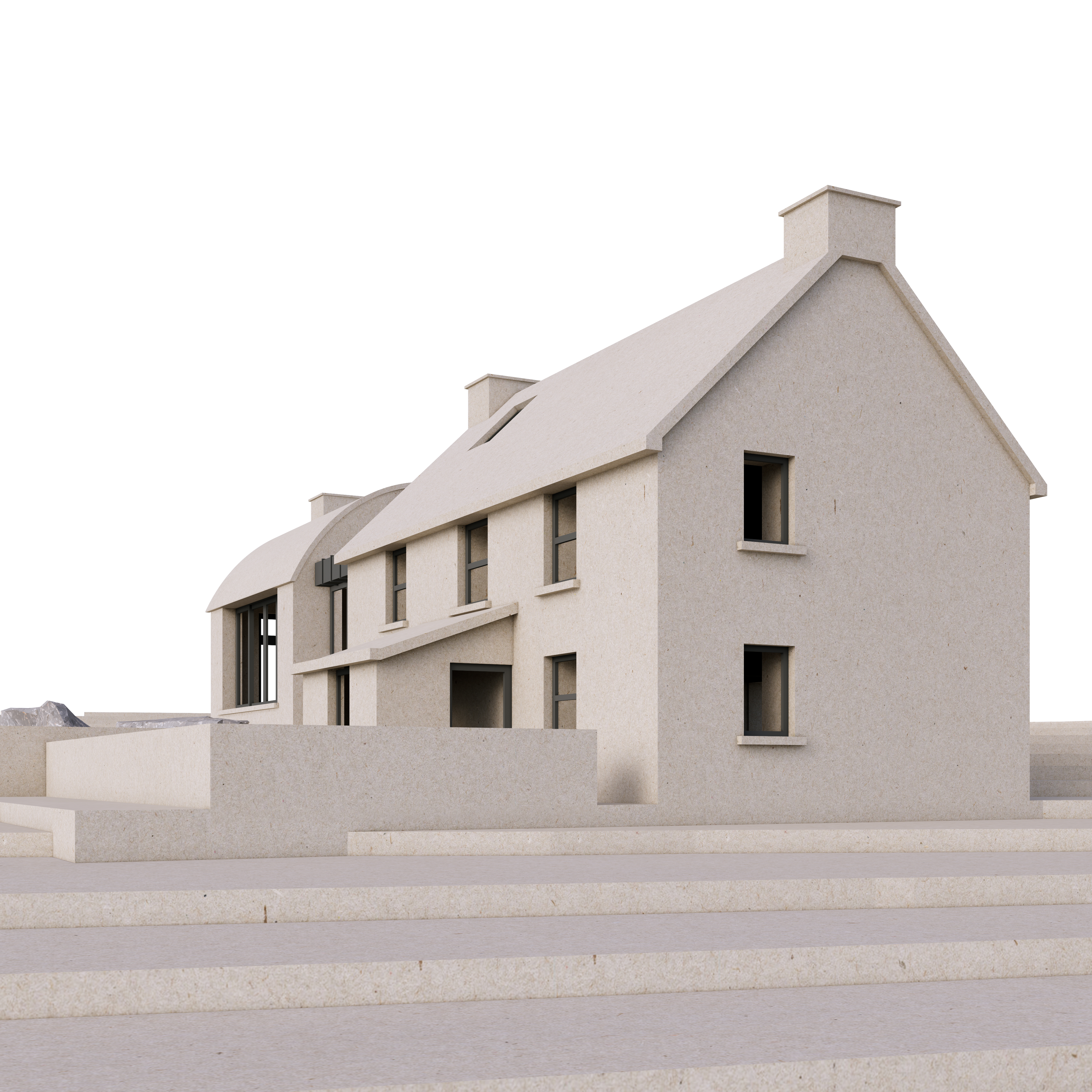
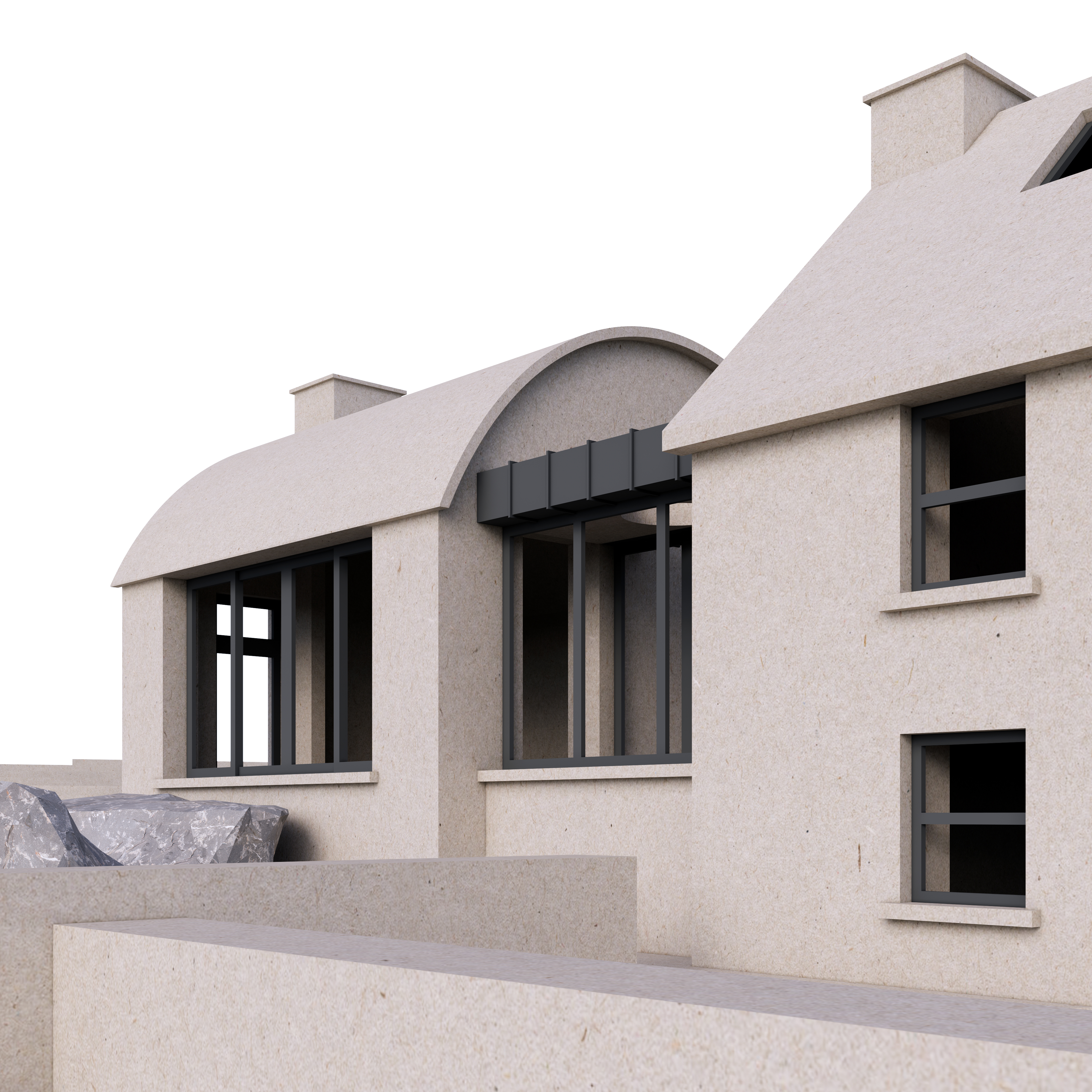
Dick Macks Pub
Client: Dick Mack’s Pub Ltd
Type: Renovation and Addition
Gross Internal Area: 96 sqm / 1000 sqft
Status: Built
Location: Co. Kerry
Date: 2023
Dick Mack’s Pub sought a sensitive reconfiguration and extension of its ‘back bar’ area. A new bar, additional seating, and upgraded toilet facilities were added. The brief was simple: honour the distinctive character of the historic front bar without imitation, establishing a complementary identity for the rear spaces that avoids pastiche.
The new layout and material palette take cues from the historic front bar, reinterpreted with subtle variation. Timber, used both pragmatically and expressively, becomes the unifying element throughout. It lines the walls to soften acoustics and introduce warmth and texture, while forming the fixed furniture: the bar counter, bar shelving, seating, doors and snugs. Existing routes through the pub were retained, and new ones were introduced to strengthen spatial and visual connections between adjoining rooms.
A key design move is the use of repetition as ornament. Along new walls, a veil of evenly spaced, CNC-machined solid oak battens wraps the interior like a continuous ribbon, aligned at a fixed datum. Below bar counter height, the battens remain square, flat and robust; above, they are scalloped, creating a shifting interplay of light and shadow. Doors puncture, while fluted glass partitions in the snugs provide softly diffused thresholds defining more intimate spaces.
Oak was chosen for its tactile warmth, longevity, and deeper cultural symbolism—long associated in Irish mythology with strength, wisdom, and resilience.
Other interventions reveal and celebrate the structure’s layered history. A thick layer of sand and cement render was deliberately removed from internal stone walls celebrate the original fabric. Construction idiosyncrasies were embraced: a lintel formed from a piece of the Dingle railway track was exposed, and original brick reveals, were preserved and sensitively restored.
To the rear, a single-storey extension replaces a former lean-to, creating a new room that opens onto the south-facing yard with views toward Dick Mack’s Brewery. Clad in locally sourced recycled stone, the extension responds directly to the exposed stone interiors and draws on the scale, materiality, and proportions of the pub’s Victorian-era fabric—ensuring the addition feels rooted, coherent, and respectful.
https://www.buildingonthebuilt.org/site-specific-dick-macks-pub
Project Collaborations:
Main Contractor: OL Construction
Joinery: Sean Kennedy + Team
Metalwork: Raymond Coffey
Stone Mason: Aidan McKenna + Team
Windows: Munster Joinery
Tiling: Tile Master Ardfert
Client: Dick Mack’s Pub Ltd
Type: Renovation and Addition
Gross Internal Area: 96 sqm / 1000 sqft
Status: Built
Location: Co. Kerry
Date: 2023
Dick Mack’s Pub sought a sensitive reconfiguration and extension of its ‘back bar’ area. A new bar, additional seating, and upgraded toilet facilities were added. The brief was simple: honour the distinctive character of the historic front bar without imitation, establishing a complementary identity for the rear spaces that avoids pastiche.
The new layout and material palette take cues from the historic front bar, reinterpreted with subtle variation. Timber, used both pragmatically and expressively, becomes the unifying element throughout. It lines the walls to soften acoustics and introduce warmth and texture, while forming the fixed furniture: the bar counter, bar shelving, seating, doors and snugs. Existing routes through the pub were retained, and new ones were introduced to strengthen spatial and visual connections between adjoining rooms.
A key design move is the use of repetition as ornament. Along new walls, a veil of evenly spaced, CNC-machined solid oak battens wraps the interior like a continuous ribbon, aligned at a fixed datum. Below bar counter height, the battens remain square, flat and robust; above, they are scalloped, creating a shifting interplay of light and shadow. Doors puncture, while fluted glass partitions in the snugs provide softly diffused thresholds defining more intimate spaces.
Oak was chosen for its tactile warmth, longevity, and deeper cultural symbolism—long associated in Irish mythology with strength, wisdom, and resilience.
Other interventions reveal and celebrate the structure’s layered history. A thick layer of sand and cement render was deliberately removed from internal stone walls celebrate the original fabric. Construction idiosyncrasies were embraced: a lintel formed from a piece of the Dingle railway track was exposed, and original brick reveals, were preserved and sensitively restored.
To the rear, a single-storey extension replaces a former lean-to, creating a new room that opens onto the south-facing yard with views toward Dick Mack’s Brewery. Clad in locally sourced recycled stone, the extension responds directly to the exposed stone interiors and draws on the scale, materiality, and proportions of the pub’s Victorian-era fabric—ensuring the addition feels rooted, coherent, and respectful.
https://www.buildingonthebuilt.org/site-specific-dick-macks-pub
Project Collaborations:
Main Contractor: OL Construction
Joinery: Sean Kennedy + Team
Metalwork: Raymond Coffey
Stone Mason: Aidan McKenna + Team
Windows: Munster Joinery
Tiling: Tile Master Ardfert

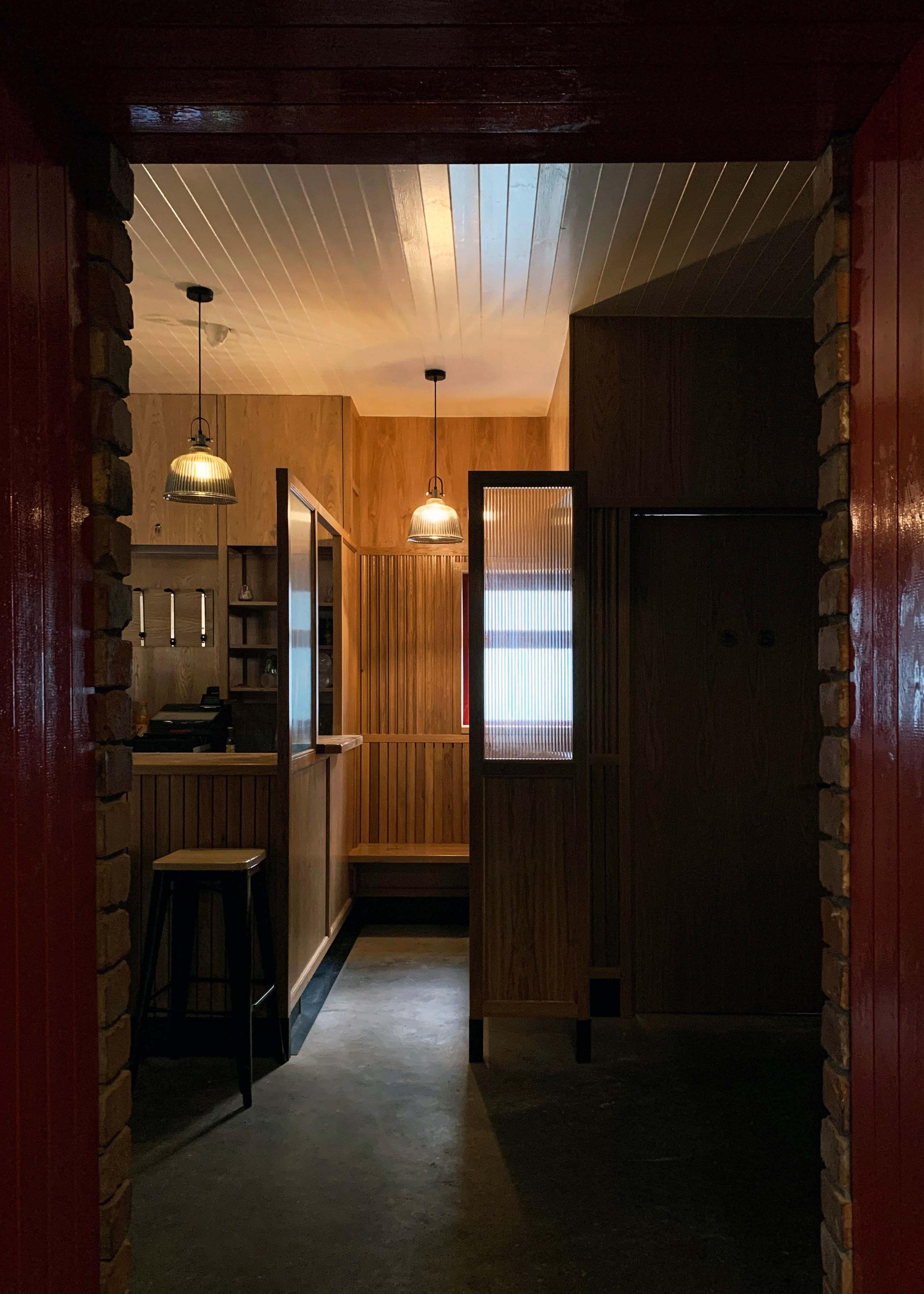

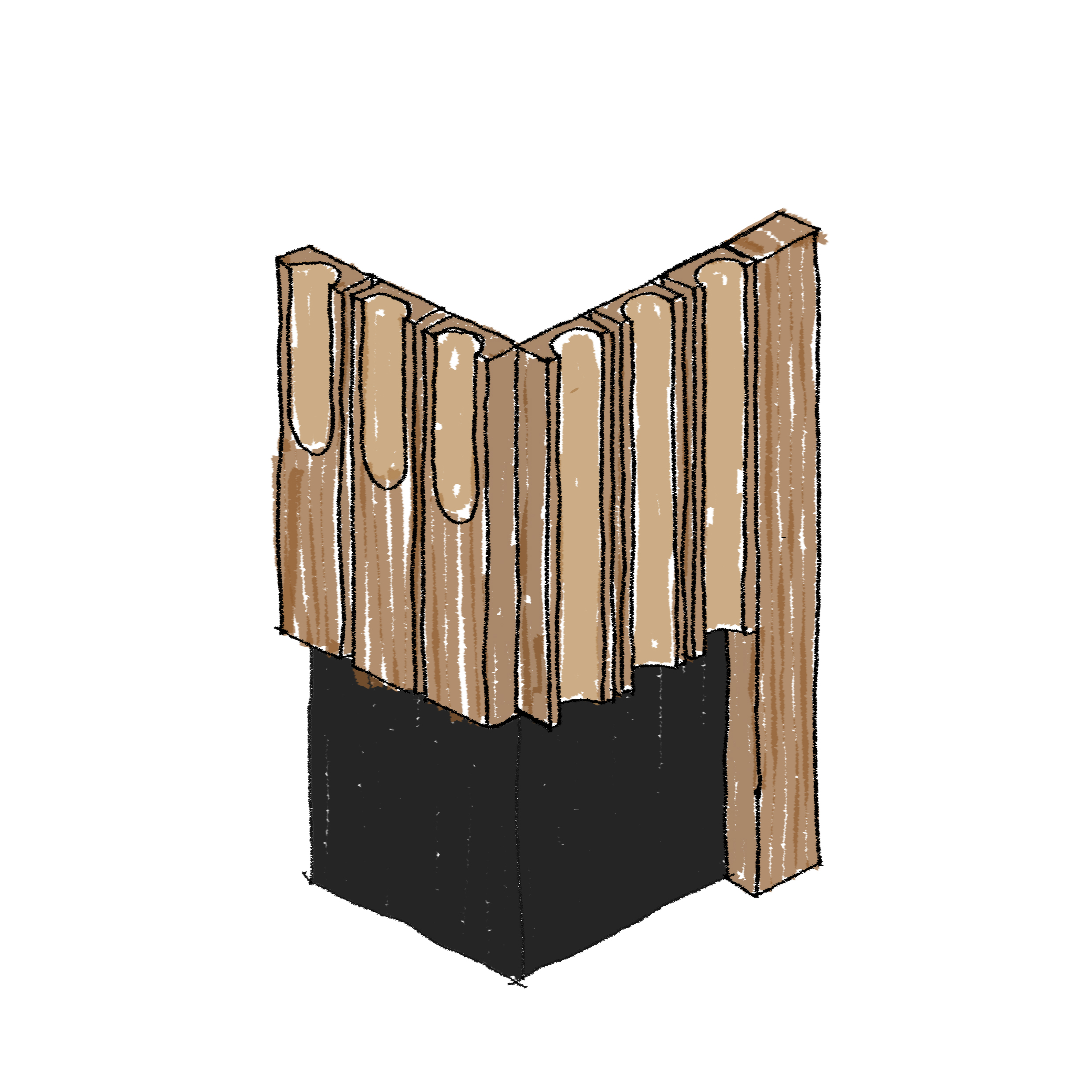
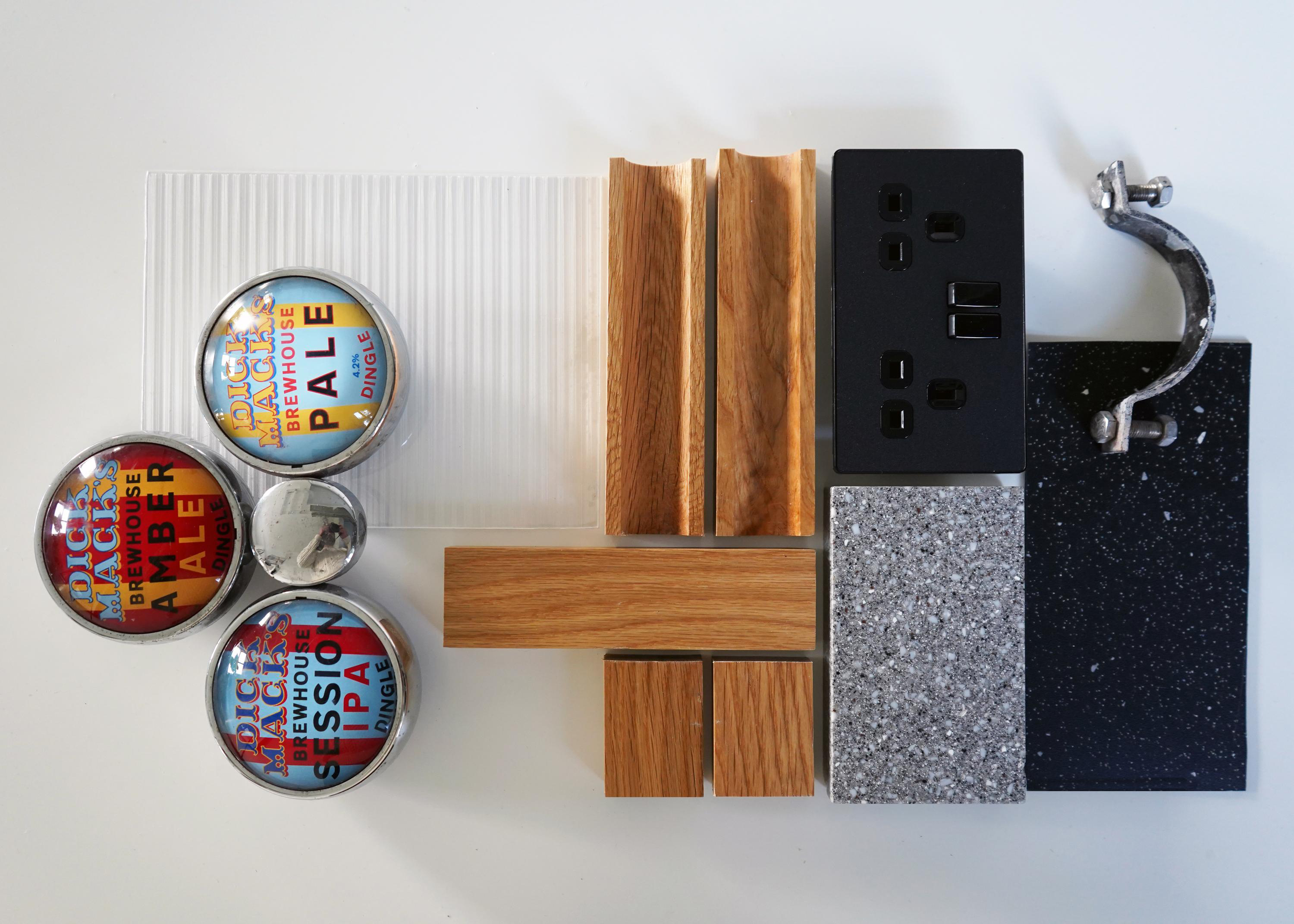

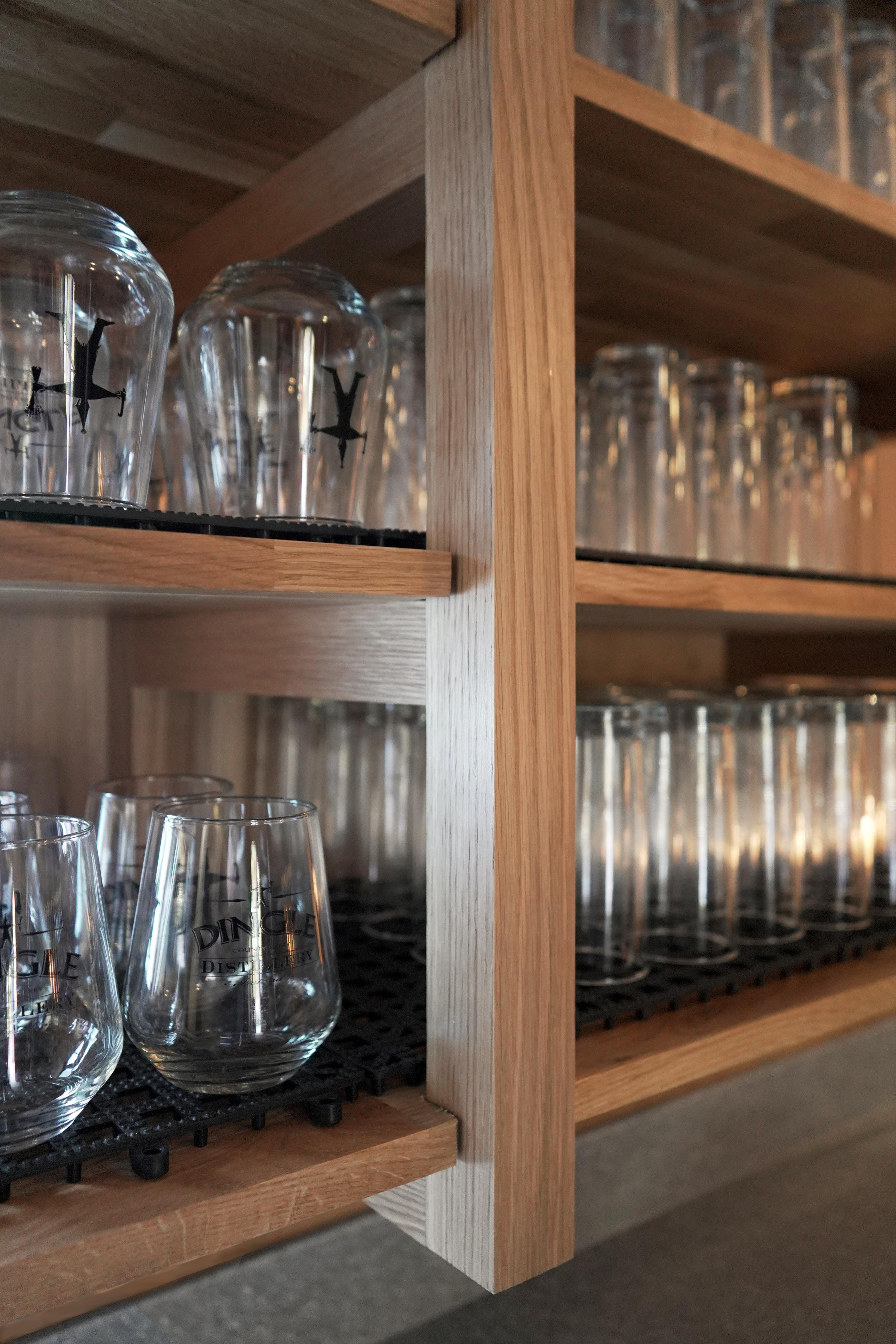

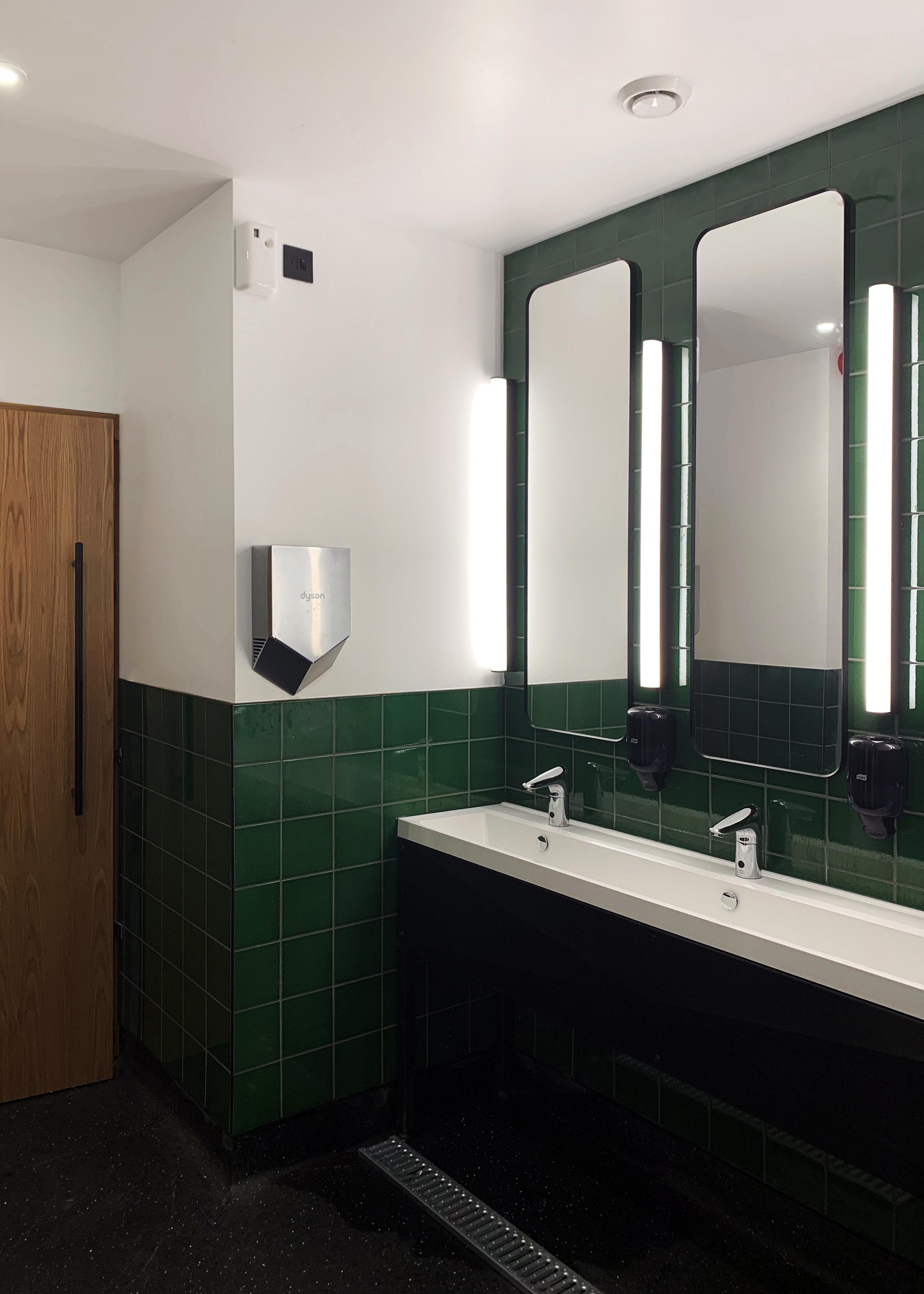

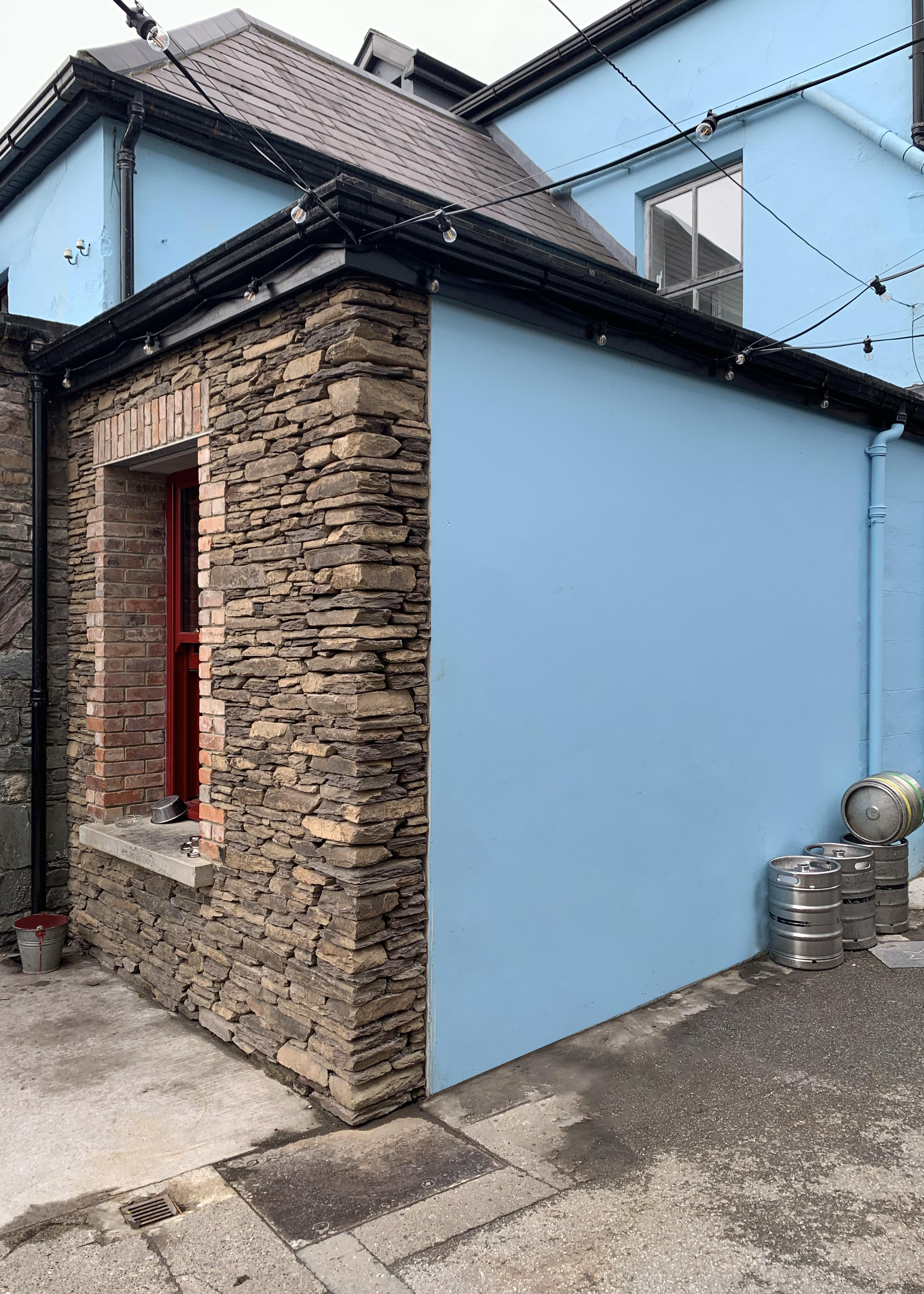

Morris+Company
Client: Morris+Company Ltd
Type: Renovation
Gross Internal Area: 672 sqm / 7000 sqft
Status: Built
Location: London Borough of Hackney
Date: 2020-2022
From 2017 to 2023, Luke Matone worked as a project architect at Morris+Company Architects, where he led the major refurbishment of a former warehouse in East London. The project transformed the existing structure into a multi-level, high-street-facing workspace that now serves as the practice’s own studio.
Conceived as a model for adaptive reuse, the design was grounded in principles of sustainability, flexibility, and circular construction. A focus on minimising embodied carbon drove the reuse of as much of the existing building fabric as possible — including salvaged glazed partitions, which were carefully re-integrated into a new modular wall system made from solid softwood timber.
This demountable timber partition — designed for future reconfiguration — also acts as a light-diffusing element, drawing natural light across the ground floor and encouraging visual connection with the street outside. Softwood, a low-carbon material, was chosen both for its renewability and simplicity, supporting the project’s ethos of honest, adaptable construction.
The basement houses a material archive, model workshop, photography studio, and ‘end-of-journey’ facilities — much of it constructed using repurposed joinery from previous studio fit-outs, extending the life of materials already in circulation.
On the first floor, a flexible open-plan studio accommodates 52 workstations, alongside meeting rooms, private call booths, and informal breakout areas — all designed to support a collaborative, future-proof working environment.
Project Collaborations:
Main Contractor: EGG Group
Photography: Jack Hobhouse
Client: Morris+Company Ltd
Type: Renovation
Gross Internal Area: 672 sqm / 7000 sqft
Status: Built
Location: London Borough of Hackney
Date: 2020-2022
From 2017 to 2023, Luke Matone worked as a project architect at Morris+Company Architects, where he led the major refurbishment of a former warehouse in East London. The project transformed the existing structure into a multi-level, high-street-facing workspace that now serves as the practice’s own studio.
Conceived as a model for adaptive reuse, the design was grounded in principles of sustainability, flexibility, and circular construction. A focus on minimising embodied carbon drove the reuse of as much of the existing building fabric as possible — including salvaged glazed partitions, which were carefully re-integrated into a new modular wall system made from solid softwood timber.
This demountable timber partition — designed for future reconfiguration — also acts as a light-diffusing element, drawing natural light across the ground floor and encouraging visual connection with the street outside. Softwood, a low-carbon material, was chosen both for its renewability and simplicity, supporting the project’s ethos of honest, adaptable construction.
The basement houses a material archive, model workshop, photography studio, and ‘end-of-journey’ facilities — much of it constructed using repurposed joinery from previous studio fit-outs, extending the life of materials already in circulation.
On the first floor, a flexible open-plan studio accommodates 52 workstations, alongside meeting rooms, private call booths, and informal breakout areas — all designed to support a collaborative, future-proof working environment.
Project Collaborations:
Main Contractor: EGG Group
Photography: Jack Hobhouse

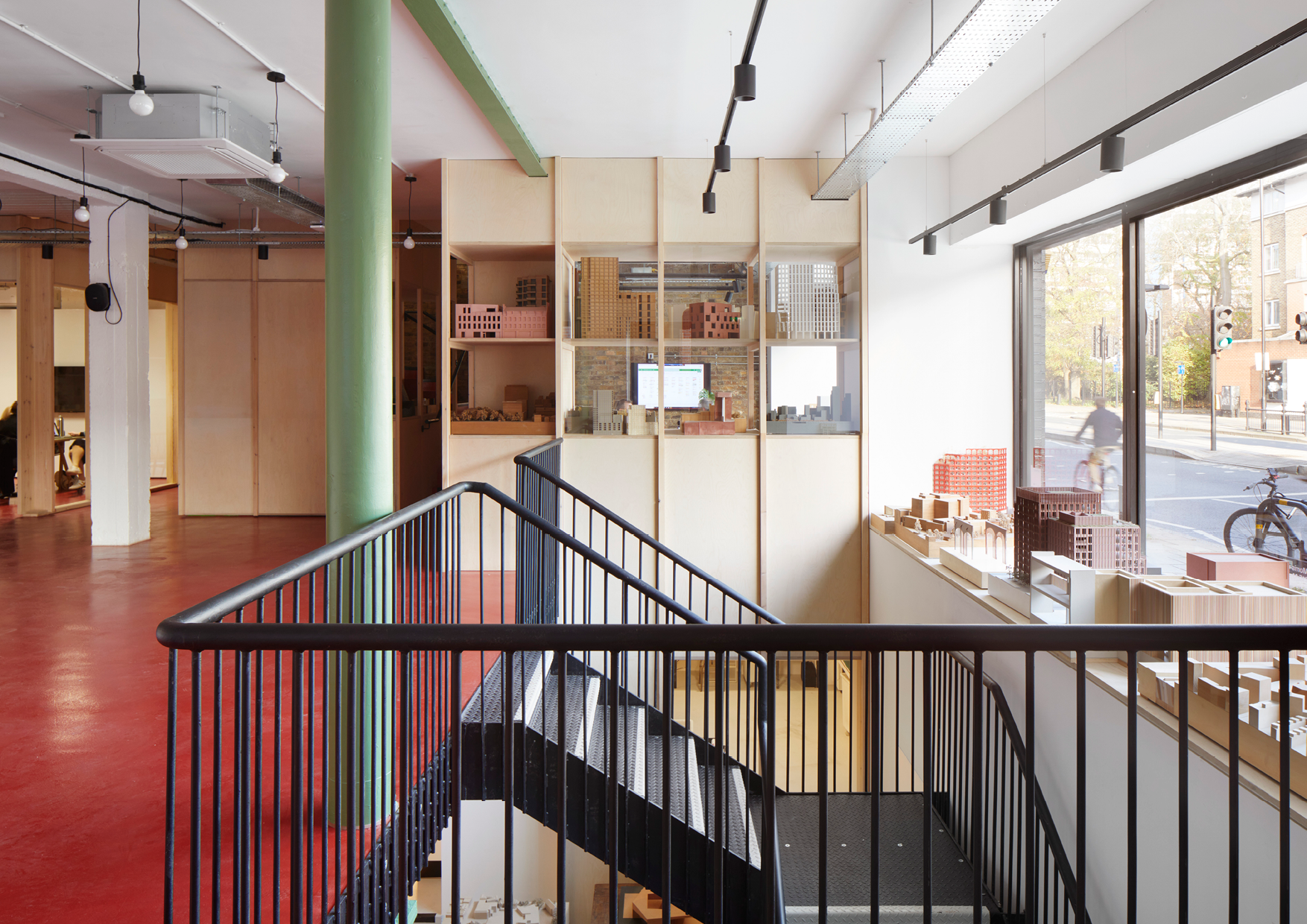

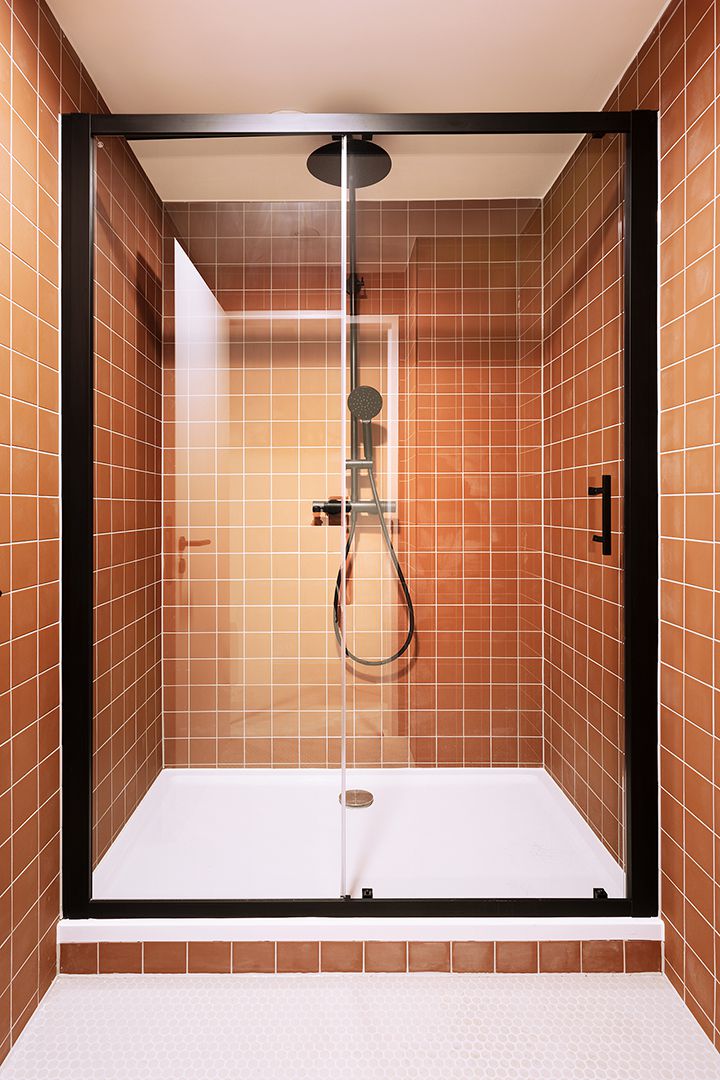



Walter Segal House
Client: Private
Type: Renovation and Addition
Gross Internal Area: 134 sqm / 1442 sqft
Status: Built
Location: London Borough of Haringey
Date: 2019-2020
From 2017 to 2023 Luke Matone worked as a project architect for Morris+Company Architects, leading the design to planning of the extension to Walter Segal’s seminal home in Highgate.
A two-storey rear extension creates a living room, a study and a master-suite overlooking the house’s long garden. The proposal aims to complement the defining characteristic of Walter Segal’s prefabricated, modular, timber-framed vernacular, and adopts his principles of efficient, lightweight, sustainable construction. Whilst celebrating a sensitive new layer of contemporary architecture to the iconic home.
The composition of the rear extension is derived from thorough analysis of the logic and layout of the original garden and house. The sequence of volumes is stacked and slipped both vertically and horizontally, graduating away from the main house, in order to preserve the reading of Segal’s original architecture; whilst at the same time creating a new, and legible whole. The internal composition continues Segal’s original zig-zag route through the main house that reveals glimpses of each on-coming room as you walk through the interior.
The use of minimal repeated elements in the design is a key concept for the construction of the extension; from the structural components and interior lining, to the modulation of the cladding and envelope. To accommodate restricted site access, we developed a component-based construction system, whereby small elements can be brought in and assembled on site.
Externally, a timber veil of uniformly spaced timber battens that envelop the extension visually and structurally links with the timber palisades used in the original house to divide large windows. A textured concrete ribbon with high recycled content wraps the base of the extension to provide a plinth to the extension and protection between the timber structure and the ground.
Internally, a timber staircase and timber internal finishes offer a smooth, warm touch and a sense of security and comfort.
Project Collaborations:
Model: William Guthrie
Model Photographs: Jack Hobhouse
Client: Private
Type: Renovation and Addition
Gross Internal Area: 134 sqm / 1442 sqft
Status: Built
Location: London Borough of Haringey
Date: 2019-2020
From 2017 to 2023 Luke Matone worked as a project architect for Morris+Company Architects, leading the design to planning of the extension to Walter Segal’s seminal home in Highgate.
A two-storey rear extension creates a living room, a study and a master-suite overlooking the house’s long garden. The proposal aims to complement the defining characteristic of Walter Segal’s prefabricated, modular, timber-framed vernacular, and adopts his principles of efficient, lightweight, sustainable construction. Whilst celebrating a sensitive new layer of contemporary architecture to the iconic home.
The composition of the rear extension is derived from thorough analysis of the logic and layout of the original garden and house. The sequence of volumes is stacked and slipped both vertically and horizontally, graduating away from the main house, in order to preserve the reading of Segal’s original architecture; whilst at the same time creating a new, and legible whole. The internal composition continues Segal’s original zig-zag route through the main house that reveals glimpses of each on-coming room as you walk through the interior.
The use of minimal repeated elements in the design is a key concept for the construction of the extension; from the structural components and interior lining, to the modulation of the cladding and envelope. To accommodate restricted site access, we developed a component-based construction system, whereby small elements can be brought in and assembled on site.
Externally, a timber veil of uniformly spaced timber battens that envelop the extension visually and structurally links with the timber palisades used in the original house to divide large windows. A textured concrete ribbon with high recycled content wraps the base of the extension to provide a plinth to the extension and protection between the timber structure and the ground.
Internally, a timber staircase and timber internal finishes offer a smooth, warm touch and a sense of security and comfort.
Project Collaborations:
Model: William Guthrie
Model Photographs: Jack Hobhouse
